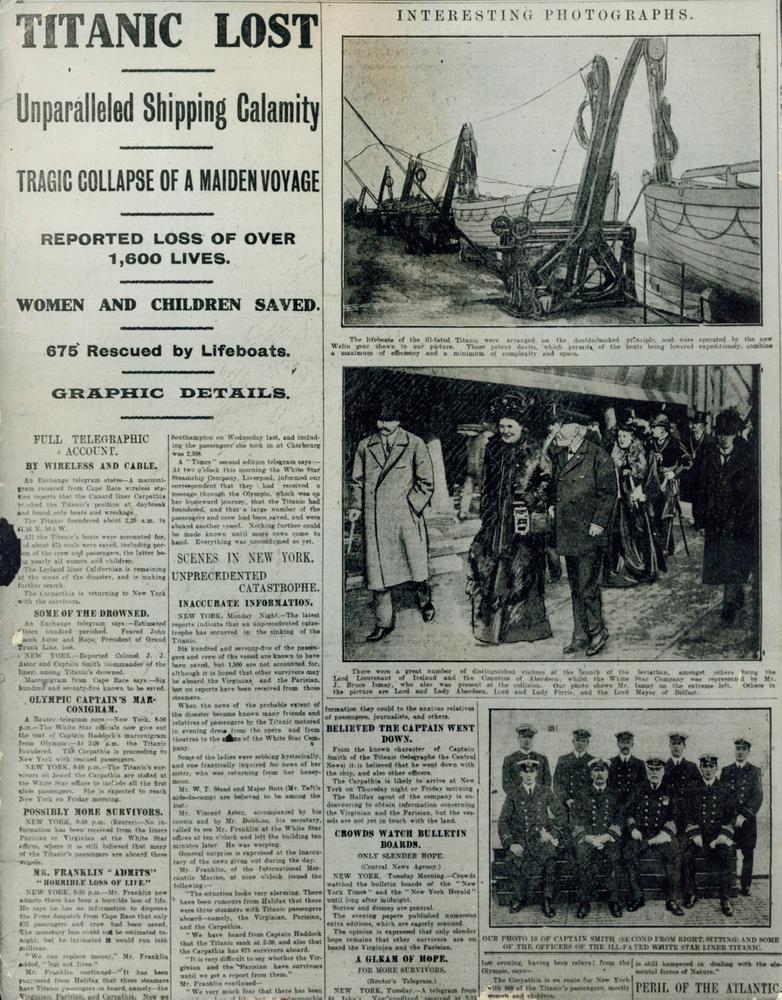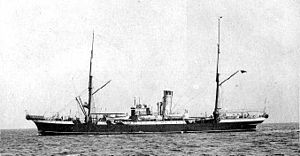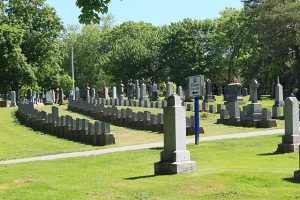
Source: Belfast Telegraph
As the world awaits news of who survived Titanic, the White Star Line decides to hire ships to go out and retrieve bodies. Reports of bodies floating in the Atlantic had been reported and White Star wanted to retrieve them as quickly as possible for a number of practical reasons. Ocean currents would eventually move them out of the area, so getting them retrieved as soon as possible would allow families to lay them to rest. Another reason for speed was that sea creatures and birds would start consuming the bodies making identification difficult as well. The cable ship Mackay Bennett was the first ship hired by White Star. Three other ships would be hired as well: Minia (a cable ship), Montmagny (lighthouse supply ship), and the sealing vessel Algerine.

Artist Unknown
Public Domain/Wikimedia Commons
Each ship would carry the necessary supplies to retrieve and embalm the bodies. The Mackay Bennett emptied itself of its normal stores in Halifax, Nova Scotia and brought aboard supplies for its new mission:
- Embalming supplies and coffins (100)
- Chief embalmer of John Snow & Co., John R. Snow Jr.
- 100 tons of ice to store the bodies
- Canon Kenneth Hind of All Saints Cathedral, Halifax
Mackay Bennett left Halifax at 12:28 pm on 17 April 1912. Due to heavy fog and rough seas, it would take four days to reach where Titanic sank. They began recovery at 0600 on 20 April. Bodies were manually recovered by skiffs and brought back to the ship. They recovered 51 bodies but realized they did not have enough embalming supplies on hand. Since the laws at the time required bodies to be embalmed before unloading from ships docking in a Canadian port, they followed a general procedure:
- First class passengers were embalmed and placed in coffins.
- Second class passengers embalmed but wrapped in canvas.
- Third class, crew, and bodies that were too decomposed or disfigured were buried at sea.
- Bodies that were brought back were either transported by relatives to their final resting place or interred in Halifax, Nova Scotia.
Back in Halifax John Henry Barnstead, the Registrar of Vital Statistics, developed a system of identifying the bodies and protect personal possessions of the deceased. Since Halifax had direct rail and steamship connections, this made it easier for families of victims to travel to Halifax and identify the bodies. A large temporary morgue was set up using a local curling rink and undertakers from all over the area were asked to assist. Many families did decide to transport the bodies back to their hometowns in the United States or in Europe. Unclaimed or unidentified bodies would be interred in Halifax. 150 bodies would eventually be interred in Halifax cemeteries. The largest number are in the Fairview Lawn Cemetery followed by the nearby Mount Olivet and Baron de Hirsch cemeteries.

William B. Grice (Wikimedia)
Bodies were still being reported in May. The Oceanic found three bodies in Titanic’s Collapsible A over two hundred miles from the sinking. When Carpathia had arrived, Fifth Officer Harold Lowe and other crewmembers removed the survivors but left three dead bodies aboard. Oceanic retrieved their bodies and then buried them at sea. On 22 May the Algerine found the body of steward James McGrady. His body was brought back to Halifax and buried in June at the Fairview Lawn Cemetery.
In the end only 333 bodies were recovered, a small number compared to the over 1,500 victims. Currents quickly moved bodies hundreds of miles making their recovery difficult. Life jackets will eventually disintegrate allowing bodies to sink or drift further away. Most who lost family, friends, and relatives had no body to bury since it was never recovered.
Sources
Books
Behe, George TITANIC: SAFETY, SPEED AND SACRIFICE, Transportation Trails, Polo, IL 1997
Eaton John P. & Haas Charles, TITANIC TRIUMPH AND TRAGEDY, SECOND EDITION, W.W. Norton & Company, New York, New York, 1995 First American Edition
Lord, Walter, A NIGHT TO REMEMBER, Holt Rinehart and Winston, New York, New York, 1955. Multiple revisions and reprints, notably Illustrated editions (1976,1977,1978 etc)
Lord, Walter, THE NIGHT LIVES ON, Willian Morrow and Company, New York, New York, 1986 (First Edition)
Lynch, Don & Marshall Ken, TITANIC AN ILLUSTRATED HISTORY, Madison Press Books, Toronto, Ontario Canada, 1992
Internet
Encyclopedia Britannica, www.britannica.com/search?query=Titanic.
“Encyclopedia Titanica.” www.encyclopedia-titanica.org.
“The Titanic: Sinking and Facts | HISTORY.” HISTORY, 12 Mar. 2024, www.history.com/topics/early-20th-century-us/titanic.















